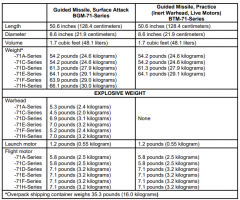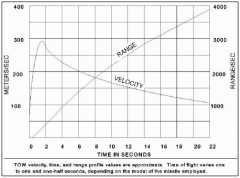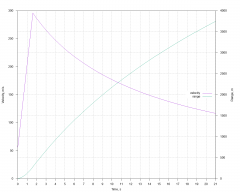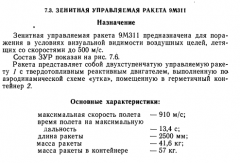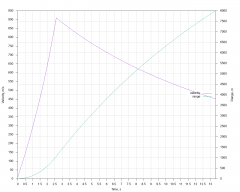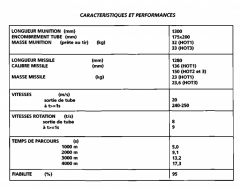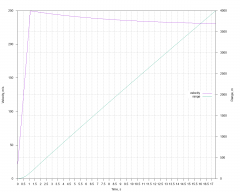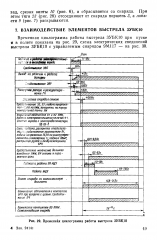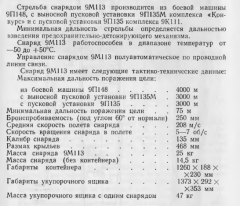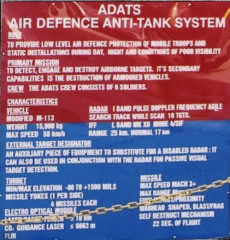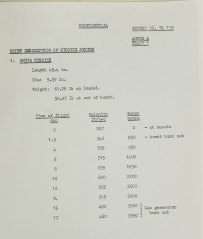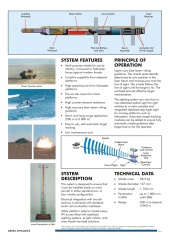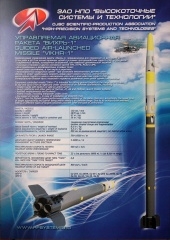Difference between revisions of "Dynamics of War Thunder missiles"
(Edits) |
|||
| Line 1: | Line 1: | ||
In War Thunder we are always eager to simulate the characteristics of military equipment with the highest possible accuracy using all sources available. However, over time, new information often appears, which in some ways may contradict original sources, so it is not surprising that when such information is received, characteristics of vehicles and weapons are getting specified. Additionally, the digitization of modeling for certain systems may increase, which require additional checks and refinements. In this case, the combat capabilities of parts of weapons may change quite significantly. Here is just such a case, and we want to highlight and explain the planned changes in as much detail as possible, while at the same time cite the sources used in this work. We will also publish detailed characteristics for all missiles, which will allow us to additionally check the game data and compare them with the documentary base. | In War Thunder we are always eager to simulate the characteristics of military equipment with the highest possible accuracy using all sources available. However, over time, new information often appears, which in some ways may contradict original sources, so it is not surprising that when such information is received, characteristics of vehicles and weapons are getting specified. Additionally, the digitization of modeling for certain systems may increase, which require additional checks and refinements. In this case, the combat capabilities of parts of weapons may change quite significantly. Here is just such a case, and we want to highlight and explain the planned changes in as much detail as possible, while at the same time cite the sources used in this work. We will also publish detailed characteristics for all missiles, which will allow us to additionally check the game data and compare them with the documentary base. | ||
| − | In the upcoming update, we will specify the dynamic characteristics of missiles, which will primarily affect the SACLOS/MCLOS ATGM and SAM. In order to correct the modeling of the flight and thrust capabilities of missiles, we have specified data such as: the mass in flight, the initial velocity (the speed of launch from the missile tube/container or from the barrel for tank guided missiles), the mass of solid propellant rocket fuel and its consumption in different operating modes, as well as the engine operation time at different modes. The drag coefficient was specified to adjust the flight time at various distances based on relevant data, as well as data on speed at different parts along the trajectory. Also, for some missiles, parameters of explosive power and | + | In the upcoming update, we will specify the dynamic characteristics of missiles, which will primarily affect the SACLOS/MCLOS ATGM and SAM. In order to correct the modeling of the flight and thrust capabilities of missiles, we have specified data such as: the mass in flight, the initial velocity (the speed of launch from the missile tube/container or from the barrel for tank guided missiles), the mass of solid propellant rocket fuel and its consumption in different operating modes, as well as the engine operation time at different modes. The drag coefficient was specified to adjust the flight time at various distances based on relevant data, as well as data on speed at different parts along the trajectory. Also, for some missiles, parameters of explosive power and armour penetration of the warhead were adjusted. |
| − | Above mentioned adjustments will be introduced to the game in one of the upcoming updates, but | + | Above mentioned adjustments will be introduced to the game in one of the upcoming updates, but you're able to learn the changes now from the [https://docs.google.com/spreadsheets/u/1/d/e/2PACX-1vSkyA72H16-jDWMM_54hpbMvJoDK1jTw5WMOuxPCqtS3IXCoDz68zU-qzMDCT6LCOxtu6cYXLxy6NgZ/pubhtml spreadsheet prepared]. |
== Glossary == | == Glossary == | ||
| Line 25: | Line 25: | ||
== 9M311 surface-to-air missile == | == 9M311 surface-to-air missile == | ||
| − | The documentation for the 2S6 SPAA describes such parameters as the maximum speed of the missile (which is 910 m/s), the operating time of the accelerating stage (2.6 s), the maximum range of 8 | + | The documentation for the 2S6 SPAA describes such parameters as the maximum speed of the missile (which is 910 m/s), the operating time of the accelerating stage (2.6 s), the maximum range of 8,000 m and the flight time to maximum range of 13.4 s. |
| − | The high characteristics of this missile are provided by a two-stage hull scheme with a detachable sub- | + | The high characteristics of this missile are provided by a two-stage hull scheme with a detachable sub-calibre sustainer weighing 18.5 kg, which contributes to a small loss of speed along the trajectory; but even at the maximum range, the 9M311 maintains a speed of 450 m/s. These features have also been replicated in the game. |
<gallery> | <gallery> | ||
| Line 50: | Line 50: | ||
</gallery> | </gallery> | ||
| − | Fluctuations in atmospheric conditions have a particularly strong effect on supersonic missiles. For example, the 9M117 missile, as part of the 3UBK10 tank shell, at its declared maximum range of 5 | + | Fluctuations in atmospheric conditions have a particularly strong effect on supersonic missiles. For example, the 9M117 missile, as part of the 3UBK10 tank shell, at its declared maximum range of 5,000 m, flies in the temperature range of -50 ... + 50°C in 15.8 - 21.3 s. The self-destruction of the missile occurs 26 seconds after it leaves the barrel, and until this self-destruction the rocket remains controllable. This allows the missile to hit targets at a slightly greater distance than the guaranteed range, which is provided in any conditions from the operating temperature range. |
<gallery> | <gallery> | ||
| Line 62: | Line 62: | ||
</gallery> | </gallery> | ||
| − | The same situation may be observed with the 9M113 ATGM, which has a maximum range of 4 | + | The same situation may be observed with the 9M113 ATGM, which has a maximum range of 4,000 m. This range however is unattainable when launched from the 9P135M launcher used on the BMP-2, since it functions for only 16 seconds, thereby not allowing use of all the capabilities of the missile. |
<gallery> | <gallery> | ||
| Line 75: | Line 75: | ||
</gallery> | </gallery> | ||
| − | Limitations on the maximum range due to the need to provide it along all temperature intervals may also be seen in some other units which, given the limited amount of information in open sources, can be misleading about the capabilities of the rocket. For example, the manufacturer of the 9K121 “Vikhr” gives that the fire range is | + | Limitations on the maximum range due to the need to provide it along all temperature intervals may also be seen in some other units which, given the limited amount of information in open sources, can be misleading about the capabilities of the rocket. For example, the manufacturer of the 9K121 “Vikhr” gives that the fire range is 8,000-10,000 m, while in some sources the flight time is 23 seconds for 8,000 m and in the other ones it is 28 seconds for 10,000 m. This discrepancy may seem unbelievable, as it implies that the missile should overcome 2,000 m in 5 seconds. In addition, misunderstanding can also cause why in some sources the maximum range is indicated as 8,000 m, while in others it is 10,000 m. However, when considering this problem from the viewpoint of possible temperature limitations, it was found that the range of 8,000-10,000 m is in good agreement with the simulation data for a temperature range of -50...+50°C and an atmospheric pressure variation of 700-800 mmHg for sea level launching. Based on this we can assume that the range of 8,000 m is the range that is achievable under all conditions in the specific temperature range under combat use and that the game achieves a flight time of 82 seconds at 8,000 m at sea level at -45°C. The maximum range of 10,000 m on other hand is achieved only under favorable launch conditions such as high air temperatures, or when launched in low atmospheric pressure conditions, for example at an altitude of 2 or 3 km. These features will now also be reproduced in the game. |
Such features also appear on other guided missiles. For example, different sources for the MIM146 also indicate a maximum range of 8,000 and 10,000 m, which is probably again related to the application of the temperature interval and the limitation of the self-destruct time of the missile. | Such features also appear on other guided missiles. For example, different sources for the MIM146 also indicate a maximum range of 8,000 and 10,000 m, which is probably again related to the application of the temperature interval and the limitation of the self-destruct time of the missile. | ||
| Line 83: | Line 83: | ||
</gallery> | </gallery> | ||
| − | Such a large difference between the range limit attained under favorable conditions and the documented maximum range attained over the entire operating temperature range is traceable mainly for fast supersonic missiles. For subsonic missiles with a short range, the difference between the documented maximum range and the range limit attained under favorable conditions in absolute numbers would be much smaller. For example, the MGM-51 has a range of up to | + | Such a large difference between the range limit attained under favorable conditions and the documented maximum range attained over the entire operating temperature range is traceable mainly for fast supersonic missiles. For subsonic missiles with a short range, the difference between the documented maximum range and the range limit attained under favorable conditions in absolute numbers would be much smaller. For example, the MGM-51 has a range of up to 3,000 m as described in various sources, but the documents from tests of this missile show that it retained control up to 3,200-3,350 m when its onboard power supply ran out and the ATGM lost control. |
<gallery> | <gallery> | ||
| Line 108: | Line 108: | ||
=== Correction of the work of semi-armour-piercing rockets === | === Correction of the work of semi-armour-piercing rockets === | ||
| − | The work of large- | + | The work of large-calibre semi-armour-piercing rockets has been fixed. Now in case of penetration of obstacles the warhead will detonate behind the obstacle, which is especially important for defeating armoured ships. |
List of semi-armour-piercing rockets with an error that causes a detonation before penetrating an obstacle: | List of semi-armour-piercing rockets with an error that causes a detonation before penetrating an obstacle: | ||
| Line 118: | Line 118: | ||
=== Clarification of armour penetration for some ATGMs === | === Clarification of armour penetration for some ATGMs === | ||
| − | + | Armour penetration parameters for some ATGMs have been updated. The ZT3A2 "Ingwe" and 9M127 "Vikhr" received significant changes and their penetration has been reduced to the manufacturer's declared values. | |
<gallery> | <gallery> | ||
| Line 132: | Line 132: | ||
=== Replacement of 9M120M with 9M120-1 === | === Replacement of 9M120M with 9M120-1 === | ||
| − | When introducing the Mi-28N helicopter into the game the vehicle originally received as a weapon 9M120M ATGM and for lack of better sources were used secondary sources, which are not confirmed by more solid documents. Over time, new data on these ammunition | + | When introducing the Mi-28N helicopter into the game the vehicle originally received as a weapon 9M120M ATGM and for lack of better sources were used secondary sources, which are not confirmed by more solid documents. Over time, new data on these ammunition didn't appear in the public domain, while in the USSR helicopter tree the Ka-52 has the characteristics of a "top" vehicle when using "Vikhr" missiles. Therefore we decided to replace 9M120M with a modern version of “Ataka” - 9M120-1 which has a dual-channel guidance system. In this case, to control 9M120-1, the Mi-28N will use the old radio command channel, while the Ka-52 will use a laser-beam control channel, which allows for a salvo launch on a single target. |
The 9М120-1 is similar to the 9M120 in terms of armour penetration and launch range but compared to the game 9M120M it has a shorter launch range and less armour penetration. And if the replacement of the 9M120M with the 9M120-1 in the Ka-52, in our opinion, will not significantly affect the performance of the latter - as the Ka-52 can use “Vikhr” ATGM, then the replacement of 9M120M with 9M120-1 for the Mi-28N may result in reduced effectiveness, and therefore a lower BR. To compensate for this in future updates we also plan to add a more modern modification of the Mi-28 helicopter, which has the ability to use more powerful weapons. | The 9М120-1 is similar to the 9M120 in terms of armour penetration and launch range but compared to the game 9M120M it has a shorter launch range and less armour penetration. And if the replacement of the 9M120M with the 9M120-1 in the Ka-52, in our opinion, will not significantly affect the performance of the latter - as the Ka-52 can use “Vikhr” ATGM, then the replacement of 9M120M with 9M120-1 for the Mi-28N may result in reduced effectiveness, and therefore a lower BR. To compensate for this in future updates we also plan to add a more modern modification of the Mi-28 helicopter, which has the ability to use more powerful weapons. | ||
| Line 285: | Line 285: | ||
Unguided missiles on ground carriers | Unguided missiles on ground carriers | ||
| − | * | + | * 82 mm М8 |
| − | * | + | * 132 mm М13 |
* ТТ-250 | * ТТ-250 | ||
* Wgr.41 Spr | * Wgr.41 Spr | ||
* MUC | * MUC | ||
| − | * | + | * 130 mm Type 75 |
* PL-3 | * PL-3 | ||
* SSK 032 | * SSK 032 | ||
| Line 297: | Line 297: | ||
Unguided missiles on sea carriers | Unguided missiles on sea carriers | ||
* М-14-OF | * М-14-OF | ||
| − | * | + | * 82 mm М8 |
| − | * | + | * 132 mm М13 |
=== List of fixed bugs: === | === List of fixed bugs: === | ||
Latest revision as of 09:04, 5 September 2022
In War Thunder we are always eager to simulate the characteristics of military equipment with the highest possible accuracy using all sources available. However, over time, new information often appears, which in some ways may contradict original sources, so it is not surprising that when such information is received, characteristics of vehicles and weapons are getting specified. Additionally, the digitization of modeling for certain systems may increase, which require additional checks and refinements. In this case, the combat capabilities of parts of weapons may change quite significantly. Here is just such a case, and we want to highlight and explain the planned changes in as much detail as possible, while at the same time cite the sources used in this work. We will also publish detailed characteristics for all missiles, which will allow us to additionally check the game data and compare them with the documentary base.
In the upcoming update, we will specify the dynamic characteristics of missiles, which will primarily affect the SACLOS/MCLOS ATGM and SAM. In order to correct the modeling of the flight and thrust capabilities of missiles, we have specified data such as: the mass in flight, the initial velocity (the speed of launch from the missile tube/container or from the barrel for tank guided missiles), the mass of solid propellant rocket fuel and its consumption in different operating modes, as well as the engine operation time at different modes. The drag coefficient was specified to adjust the flight time at various distances based on relevant data, as well as data on speed at different parts along the trajectory. Also, for some missiles, parameters of explosive power and armour penetration of the warhead were adjusted.
Above mentioned adjustments will be introduced to the game in one of the upcoming updates, but you're able to learn the changes now from the spreadsheet prepared.
Contents
- 1 Glossary
- 2 TOW series anti-tank guided missiles
- 3 9M311 surface-to-air missile
- 4 HOT series anti-tank guided missiles
- 5 Dependence of the maximum flight range of the ATGM on the onboard equipment and atmospheric conditions
- 6 Clarification of other rocket characteristics
- 6.1 Clarification of explosive mass weight
- 6.2 Correction of the work of semi-armour-piercing rockets
- 6.3 Clarification of armour penetration for some ATGMs
- 6.4 Replacement of 9M120M with 9M120-1
- 6.5 Clarification of launch conditions for the Type 79 wire-guided ATGM
- 6.6 Influence of the LWS/LR on ATGM with interference-protected optical feedback
- 6.7 Changes of the characteristics of the unguided aircraft rocket
- 6.8 List of fixed bugs:
Glossary
- UAR — unguided aircraft rocket.
- PADS — Portable Air Defence System.
- ATGM — Anti-tank guided missile.
- SAM — Guided surface-to-air missile.
- SACLOS — semiautomatic command to line of sight.
- MCLOS — manual command to line of sight.
TOW series anti-tank guided missiles
The TOW ATGM family utilizes a single-mode booster solid propellant and flies in passive mode for most of the trajectory. The documentation for this missile family provides comprehensive information on the mass of the ATGM and its components, such as the mass of explosives and propellants.
It is also important that the documentation contains the data on the “range - speed” so it will pair on time.
9M311 surface-to-air missile
The documentation for the 2S6 SPAA describes such parameters as the maximum speed of the missile (which is 910 m/s), the operating time of the accelerating stage (2.6 s), the maximum range of 8,000 m and the flight time to maximum range of 13.4 s.
The high characteristics of this missile are provided by a two-stage hull scheme with a detachable sub-calibre sustainer weighing 18.5 kg, which contributes to a small loss of speed along the trajectory; but even at the maximum range, the 9M311 maintains a speed of 450 m/s. These features have also been replicated in the game.
HOT series anti-tank guided missiles
The HOT ATGM family has a dual-mode solid rocket engine operating throughout the flight, which provides the missile with a high-average speed and a short flying time even at maximum distance.
Dependence of the maximum flight range of the ATGM on the onboard equipment and atmospheric conditions
The flight time of missiles to the required range, both in real life and in our game, depend on the air density, which, in its turn, depends on temperature and atmospheric pressure. The lower the temperature and the higher the atmospheric pressure, the higher the air density and, accordingly, the higher the drag, which affects the loss of speed in flight.
Fluctuations in atmospheric conditions have a particularly strong effect on supersonic missiles. For example, the 9M117 missile, as part of the 3UBK10 tank shell, at its declared maximum range of 5,000 m, flies in the temperature range of -50 ... + 50°C in 15.8 - 21.3 s. The self-destruction of the missile occurs 26 seconds after it leaves the barrel, and until this self-destruction the rocket remains controllable. This allows the missile to hit targets at a slightly greater distance than the guaranteed range, which is provided in any conditions from the operating temperature range.
The maximum range is limited not only by the technical capabilities of the missile, but also by the corresponding capabilities of fire control systems for the maximum time for generating control signals or a control field. So, the sights of the 1K13 family provide the formation of a control information channel up to 17 seconds, which limits the possibilities of using the 9M117 and 9M119 ATGMs at long distances while operating the T-55AM-1 and T-72B, respectively. According to the technical descriptions for these vehicles, the maximum range is indicated as 4 km, which is achieved by the temperature ranges of combat use; although, under favorable conditions, control of these ATGMs is actually possible at a greater distance - as long as the control information channel is available.
The same situation may be observed with the 9M113 ATGM, which has a maximum range of 4,000 m. This range however is unattainable when launched from the 9P135M launcher used on the BMP-2, since it functions for only 16 seconds, thereby not allowing use of all the capabilities of the missile.
This limitation of maximum range is specified by the operating time of the expendable power battery of the launcher, as well as the timing diagram of the range software block.
Limitations on the maximum range due to the need to provide it along all temperature intervals may also be seen in some other units which, given the limited amount of information in open sources, can be misleading about the capabilities of the rocket. For example, the manufacturer of the 9K121 “Vikhr” gives that the fire range is 8,000-10,000 m, while in some sources the flight time is 23 seconds for 8,000 m and in the other ones it is 28 seconds for 10,000 m. This discrepancy may seem unbelievable, as it implies that the missile should overcome 2,000 m in 5 seconds. In addition, misunderstanding can also cause why in some sources the maximum range is indicated as 8,000 m, while in others it is 10,000 m. However, when considering this problem from the viewpoint of possible temperature limitations, it was found that the range of 8,000-10,000 m is in good agreement with the simulation data for a temperature range of -50...+50°C and an atmospheric pressure variation of 700-800 mmHg for sea level launching. Based on this we can assume that the range of 8,000 m is the range that is achievable under all conditions in the specific temperature range under combat use and that the game achieves a flight time of 82 seconds at 8,000 m at sea level at -45°C. The maximum range of 10,000 m on other hand is achieved only under favorable launch conditions such as high air temperatures, or when launched in low atmospheric pressure conditions, for example at an altitude of 2 or 3 km. These features will now also be reproduced in the game.
Such features also appear on other guided missiles. For example, different sources for the MIM146 also indicate a maximum range of 8,000 and 10,000 m, which is probably again related to the application of the temperature interval and the limitation of the self-destruct time of the missile.
Such a large difference between the range limit attained under favorable conditions and the documented maximum range attained over the entire operating temperature range is traceable mainly for fast supersonic missiles. For subsonic missiles with a short range, the difference between the documented maximum range and the range limit attained under favorable conditions in absolute numbers would be much smaller. For example, the MGM-51 has a range of up to 3,000 m as described in various sources, but the documents from tests of this missile show that it retained control up to 3,200-3,350 m when its onboard power supply ran out and the ATGM lost control.
As part of our game we try to represent as accurately as possible the capabilities of historical prototype weapons so some missiles for which relevant information has been found will receive a refined maximum range. This will be set according to more realistic constraints such as on-board and controlling instrumentation times, unless there were other limiting factors.
It is important for our game to convey to players the real capabilities of their weapons, so in the next updates we will add information to the guided missiles cards, which will allow all to know both the guaranteed range achieved over the whole range of launch conditions and the range maximally achievable under optimal conditions. Some of the missiles already have a specified maximum range which depends on the parameters determined by actual limitations of the hardware. Other missiles will receive a refinement of their maximum range along with an update in which the missile cards will be supplemented with information to determine the guaranteed range attainable under all launch conditions.
Clarification of other rocket characteristics
Clarification of explosive mass weight
Some missiles were overestimated in terms of explosive mass weight, in some cases equal to the total mass of the warhead. For example, for the AS-20, an explosive mass weight of almost 30 kg is used as an example, equivalent to the weight of the warhead; that amount of explosive mass in its volume would exceed the entire warhead. Below is a diagram showing the volume occupied by 12.1 kg of Composition B and 29.9 kg of TNT.
List of missiles with specified warhead weight:
- AS-20: 29.9 kg TNT → 12.1 kg Composition B
- AS-30: 125.9 kg TNT → 88 kg Composition B
- AGM-12B: 63.5 kg TNT → 43 kg Composition H6
- Type 130-2: 13.8 kg HTA → 6.4 kg HTA
Correction of the work of semi-armour-piercing rockets
The work of large-calibre semi-armour-piercing rockets has been fixed. Now in case of penetration of obstacles the warhead will detonate behind the obstacle, which is especially important for defeating armoured ships.
List of semi-armour-piercing rockets with an error that causes a detonation before penetrating an obstacle:
- Tiny Tim
- Red Angel
- Triplex R.P.
- Uncle Tom
- hpsrak M/49
Clarification of armour penetration for some ATGMs
Armour penetration parameters for some ATGMs have been updated. The ZT3A2 "Ingwe" and 9M127 "Vikhr" received significant changes and their penetration has been reduced to the manufacturer's declared values.
In addition, some helicopter-based ATGMs had a different armour penetration than the same ATGMs mounted on ground vehicles. This error has been corrected.
The list of ATGMs whose penetration differed when mounted on ground vehicles and on helicopters:
- TOW-2
- HOT-1
Replacement of 9M120M with 9M120-1
When introducing the Mi-28N helicopter into the game the vehicle originally received as a weapon 9M120M ATGM and for lack of better sources were used secondary sources, which are not confirmed by more solid documents. Over time, new data on these ammunition didn't appear in the public domain, while in the USSR helicopter tree the Ka-52 has the characteristics of a "top" vehicle when using "Vikhr" missiles. Therefore we decided to replace 9M120M with a modern version of “Ataka” - 9M120-1 which has a dual-channel guidance system. In this case, to control 9M120-1, the Mi-28N will use the old radio command channel, while the Ka-52 will use a laser-beam control channel, which allows for a salvo launch on a single target.
The 9М120-1 is similar to the 9M120 in terms of armour penetration and launch range but compared to the game 9M120M it has a shorter launch range and less armour penetration. And if the replacement of the 9M120M with the 9M120-1 in the Ka-52, in our opinion, will not significantly affect the performance of the latter - as the Ka-52 can use “Vikhr” ATGM, then the replacement of 9M120M with 9M120-1 for the Mi-28N may result in reduced effectiveness, and therefore a lower BR. To compensate for this in future updates we also plan to add a more modern modification of the Mi-28 helicopter, which has the ability to use more powerful weapons.
Clarification of launch conditions for the Type 79 wire-guided ATGM
In the case of wire-guided ATGMs the launch of the missile requires the carrier to stop. However, the Type 79 wire-guided ATGM didn’t have launch restrictions during flight due to an error.
Influence of the LWS/LR on ATGM with interference-protected optical feedback
The searchlights of the optoelectronic suppression complex emitter module was emitting in the near-infrared range, thus interfering with the goniometers on the ATGM launchers (goniometer is a device that measures the angle between the line of sight and the ATMS tracer; used in anti-tank systems, which track the position of the missile by the tracer).
However, there are some ATCs with interference-protected optical feedback. For example, TOW-2 series anti-tank guided missiles which, unlike earlier TOW series, additionally have a near infrared illuminated xenon lamp. This solution makes it possible to track the ATGM in a wavelength range other than that of the LWS/LR projectors which reduces the effect of the latter and allows the launcher to track the missile's position in the presence of near-infrared interference. Alternative solutions also exist, for example BILL-2 uses a laser diode as a tracer, emitting a coded signal, which also reduces the effectiveness of external interference.
The list of interference-protected optical feedback ATGMs present in the game:
- TOW-2
- TOW-2B
- BILL-2
Changes of the characteristics of the unguided aircraft rocket
Unguided rockets have also undergone a significant change in characteristics: in addition to clarifying the warhead parameters and dynamic characteristics, we also changed the accuracy of modern aircraft unguided rockets. The accuracy of the rockets , stabilized by the drop-down tail has been increased, the maximum spread angle has been reduced from 2.5° to 1.3°.
List of missiles with updated dynamic characteristics:
SAM
- Rb 70
- Rb 70 mk.2
- 9М311
- 9М311М1
- Roland 1
- Roland 3
- VT1
ATGM
- TOW
- I-TOW
- TOW-2
- TOW-2B
- SS.11
- MILAN
- MILAN 2
- HOT-1
- HOT-2
- HOT-3
- 3М7
- 9М14
- 9М14M
- 9М14M-2
- 9М17M
- 9М17P
- 9М113
- 9М114
- 9М120
- 9М12OF-1
- 9М123/9М123F
- 9М133-1
- 9М133FM-3
- 9М220O
- Type 64 MAT
- Type 79 ATGM / Type 79 ASM
- ZT3A1
- ZT3A2
- BILL-2
- HJ-73
- HJ-73E
- BAe Swingfire
- BAe Swingfire Mk.2
Tank guided missiles
- 9М112
- 9М119
- 9М119М1
- 9М117-1
- 9М117-2
- 9М117-3
- 9М117М1-3
- GP105
- MGM61B/MGM61C
- MP ACRA
Guided air-to-surface missiles
- H-66
- H-23M
- H-25
- H-29L
- AGM-12B
- AGM-12C
- AGM-65A
- AGM-65B
- AS-20
- AS-30
- AGM-114B
- AGM-114K
Guided air-to-air missiles and MANPADs
- 9М39
- AA-20
Unguided air missiles
- RS-82
- RS-132
- RBS-82
- RBS-132
- S-1OF
- S-3K
- S-5M
- S-5K
- S-5KP
- S-8KO
- S-8M
- S-13OF
- S-21
- S-24
- S-24B
- Wfr.Gr.21
- R4M
- PB 2
- RZ 65
- M8
- HVAR
- Tiny Tim
- Hydra-70 M247
- CRV7 M247
- FFAR Mighty Mouse
- FFAR Mighty Mouse M439
- Zuni Mk32
- AP Mk I
- AP Mk II
- RP-3
- Red Angel
- Triplex R.P.
- Uncle Tom
- RN
- HF-5
- Type 90-1 HEAT
- Type 130-2
- T10 140
- T10 151
- TDA 68 mm
- SNEB type 23
- TBA ECC
- TBA Multi-Dart 100 AB
- m/55
- m/57B
- m/56D
- 14,5 cm psrak m/49A
- m/49A
- 15 cm srak m/51
- 18 cm hprak m/49
- Type 3 No.1 Mod.28 Mk.1
- Type 3 No.6 Mod.27 Mk.1
- Type 5 No.1 Mod.9
- Type 5 No.6 Mod.9
Unguided missiles on ground carriers
- 82 mm М8
- 132 mm М13
- ТТ-250
- Wgr.41 Spr
- MUC
- 130 mm Type 75
- PL-3
- SSK 032
- M8
Unguided missiles on sea carriers
- М-14-OF
- 82 mm М8
- 132 mm М13
List of fixed bugs:
- Operation time of the solid rocket engine for ATGMs of the TOW series have been corrected (report 1, report 2).
- The operation time of the solid rocket engine has been corrected, and the speed on the trajectory of the MGM-51 series ATGM, has been clarified (report).
- The flight distance and penetration of the ZT3A2 (ATGM) have been corrected (report 1, report 2).
- Dynamic parameters of the AGM-12C have been fixed (report).
- The difference between the ground and air versions of RP-3 missiles have been fixed (report).
- Mistakenly present remote fuse for the M247 warhead on missiles in the series FFAR, Hydra, CRV7 has been removed (report).
- The operation time and ballistics of the unguided air missile series FFAR have been clarified (report).
- A problem with early self-destruction of the Wfr.Gr.21 missile has been fixed (report).


